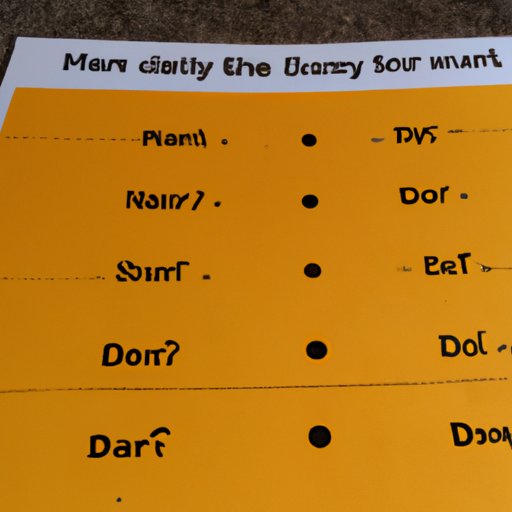Introduction
The sun is an essential part of our solar system, providing light and energy to all the planets that revolve around it. But just how big is the sun compared to the other planets in our system? And how many earths could fit inside it? In this article, we’ll explore these questions by looking at the size, volume, and density of the sun and comparing it to the earth to calculate how many earths it would take to fill it.
Exploring the Volume of the Sun and How Many Earths It Would Take to Fill It
Estimating the size of the sun can be difficult because it is so much larger than the other planets in our system. One way to measure the size of the sun is to look at its diameter. The diameter of the sun is roughly 1.39 million kilometers, which is 109 times larger than the diameter of the earth. To put that into perspective, if you were to stand on the surface of the sun, you would be standing 109 times farther away from the center of the sun than you would be standing on the surface of the earth.
Once we have an estimate of the size of the sun, we can then calculate its volume. The volume of a sphere is equal to 4/3πr³, where r is the radius of the sphere. The radius of the sun is 696,000 kilometers, so the volume of the sun is 1.41 x 10^18 cubic kilometers.
To compare the volume of the sun to that of the earth, we need to know the volume of the earth. The volume of the earth is approximately 1.083 x 10^12 cubic kilometers. This means that the volume of the sun is roughly 1.3 million times larger than the volume of the earth.
Now that we know the difference in size between the sun and the earth, we can calculate how many earths could fit inside the sun. To do this, we need to divide the volume of the sun by the volume of the earth. This gives us a result of 1.3 x 10^6, or 1.3 million. This means that if the sun was hollow, it could fit roughly 1.3 million earths inside it.
A Comparison of the Sun’s Size to That of the Earth and How Many Earths Could Fit Inside
We now know that the sun is much larger than the earth and that it could theoretically fit 1.3 million earths inside it. But what about the mass of the sun? How does the mass of the sun compare to the mass of the earth, and how many planets would it take to occupy its space?
The mass of the sun is roughly 1.989 x 10^30 kilograms. This is 333,060 times larger than the mass of the earth, which is 5.97 x 10^24 kilograms. If the sun was hollow, it would take 333,060 planets with the same mass as the earth to occupy its space.
However, mass is not the only factor to consider when comparing the size of the sun to that of the earth. We also need to consider the density of the two objects. Density is the amount of mass per unit of volume, and it can tell us how much space an object takes up relative to its mass.

Calculating the Density of the Sun and How Many Earths It Would Take to Match Its Size
To calculate the density of the sun, we need to divide its mass by its volume. The mass of the sun is 1.989 x 10^30 kilograms, and its volume is 1.41 x 10^18 cubic kilometers. When we divide the mass by the volume, we get a result of 1.4 x 10^12 kilograms per cubic kilometer. This is the density of the sun.
To find out how many earths would be needed to match the size of the sun, we need to divide the mass of the sun by the mass of the earth. This gives us a result of 333,060. This means that it would take 333,060 planets with the same mass as the earth to match the size of the sun.
Conclusion
In this article, we explored the size, volume, and density of the sun and how many earths would fit inside it. We found that the sun is much larger than the earth, with a diameter that is 109 times larger and a volume that is 1.3 million times larger. We also found that it would take 333,060 planets with the same mass as the earth to match the size of the sun. This goes to show just how vast and powerful the sun is compared to the other planets in our system.
It’s hard to comprehend how large the sun is until you actually see it for yourself. The next time you get a chance to look at the sun, take a moment to appreciate its enormity and power.
(Note: Is this article not meeting your expectations? Do you have knowledge or insights to share? Unlock new opportunities and expand your reach by joining our authors team. Click Registration to join us and share your expertise with our readers.)
